The Shocking Link Between Acne (and Rosacea) And MRSA That No One Is Talking About

Discover the hidden link between acne, rosacea, and MRSA that is often overlooked. Learn why antibiotics are not always necessary.
You may not be aware, but there is a little-known connection between acne and MRSA that is rarely discussed. MRSA, which is a drug-resistant strain of Staphylococcus aureus bacteria("staph"), can actually worsen acne symptoms.
It is estimated that around one-third of the population carries MRSA bacteria on their skin without experiencing any symptoms or infections.
It is crucial to be cautious when treating acne with topical or systemic (oral) antibiotics) and to seek medical advice to prevent the potential complications associated with MRSA.
This article is for information only. Do not use it to treat or manage an actual conditions without consulting your medical practitioner.
Acne and MRSA
Antibiotics are commonly prescribed for skin infections such as acne and rosacea. They work by decreasing the number of bacteria that become trapped in and around hair follicles and sebaceous glands.
MRSA (Methicillin-Resistant Staphylococcus aureus), can infect the hair follicles and oil glands on the skin, leading to more severe acne breakouts. The use of antibiotics to treat acne can contribute to the development of MRSA by promoting antibiotic resistance.
Staphylococci, also known as "staph" bacteria, are usually found on the skin and in the nose. They're typically harmless and don't cause any trouble. However, if they manage to enter the body, they can potentially lead to an infection.
MRSA can be transmitted through simple contact with someone or something carrying the bacteria. It's important to be aware that touching your skin or even your nose after coming into contact with it increases the risk.
Dangers of Antibiotic Overuse
Antibiotics can have a negative impact on the good bacteria in our guts. It can actually lead to an overgrowth of fungi like Candida, which is already present in everyone's gut but usually kept in balance by the probiotic bacteria needed to produce chemicals that help keep it in check.
There is growing evidence that the major cause of MRSA is the inappropriate overuse of antibiotics. Some topical antibiotic treatment creams are easily available over-the- counter.
People also sometimes use antibiotics for infections that are viral and do not require antibiotics.
Misuse of antibiotics is another factor (for example you stop taking your antibiotics before finishing a prescription or you skip doses).
Antibiotics used for wound infections
The antibiotics used for wound infections are often the same or similar to the one that has been used for the patient’s acne, and it is not surprising they find the antibiotics don’t work as the bugs are already resistant.
This resistant strain becomes a problem when an acne sufferer potentially experience drug resistance in instances where they need antibiotics for more serious conditions.
How your Dermatologist can Help
Both oral antibiotics and topical antibiotics are commonly used to treat acne. But it's important to understand that regardless of how they are used, they can potentially have the same effect.
Bacterial skin and soft tissue infections (SSTIs) are frequently seen in dermatology clinics, with a particular emphasis on methicillin-resistant strains. There are antibiotics that can treat MRSA successfully.
Your dermatologist is able to identify and prescribe treatment that counteracts antibiotic resistance and even the right antibiotics to heal MRSA infections.
There are a few dermatological conditions where taking systemic antibiotics may not be necessary. Studies have shown that using antibiotics internally does not speed up the healing process of non-infected venous ulcers. In fact, it can actually lead to the growth of drug-resistant bacteria.
If you are an acne or rosacea sufferer, your main goal for acne treatments should be to limit antibiotic use and instead eradicate the root cause of acne, like an unhealthy gut syndrome that can lead to inflammation and potentially result in acne and other health problems. This will reduce antibiotic resistance in patients that also has acne or rosacea issues.
Product Review
Everyday health aids
We've searched around to find these products are truly helpful for everyday health aid and provide relief from common ailments. They offer a great alternative to constantly relying on antibiotics, which can lead to over-dependence and potential resistance. With these products, you can experience more comfort and relief without the need for excessive antibiotic use.
This post includes affiliate links. If you choose to purchase through one of my links, I'd like to thank you for your support! I'm able to get a small commission, with no extra charges for you. To learn more, please check out the full disclosure with all the details.
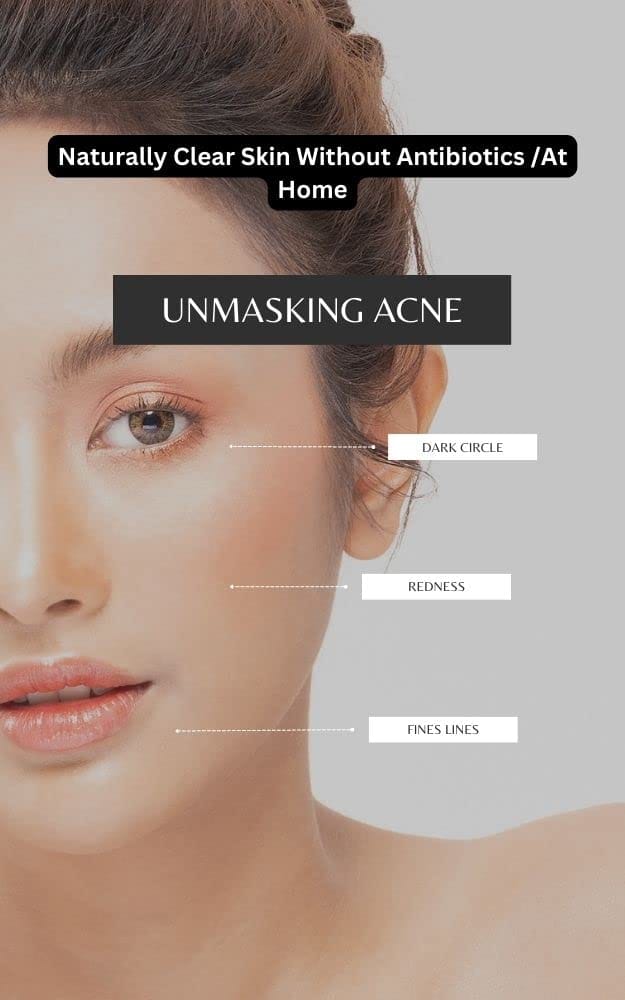
BOOK - Unmasking Acne: How to get rid Of Acne, Complete Guideline, Naturally Clear Skin Without Antibiotics At Home
This comprehensive guide is for anyone who struggles with acne and wants to learn how to get rid of it naturally without the use of antibiotics. With the right knowledge and tools, you can take control of your acne and achieve clear, healthy skin.
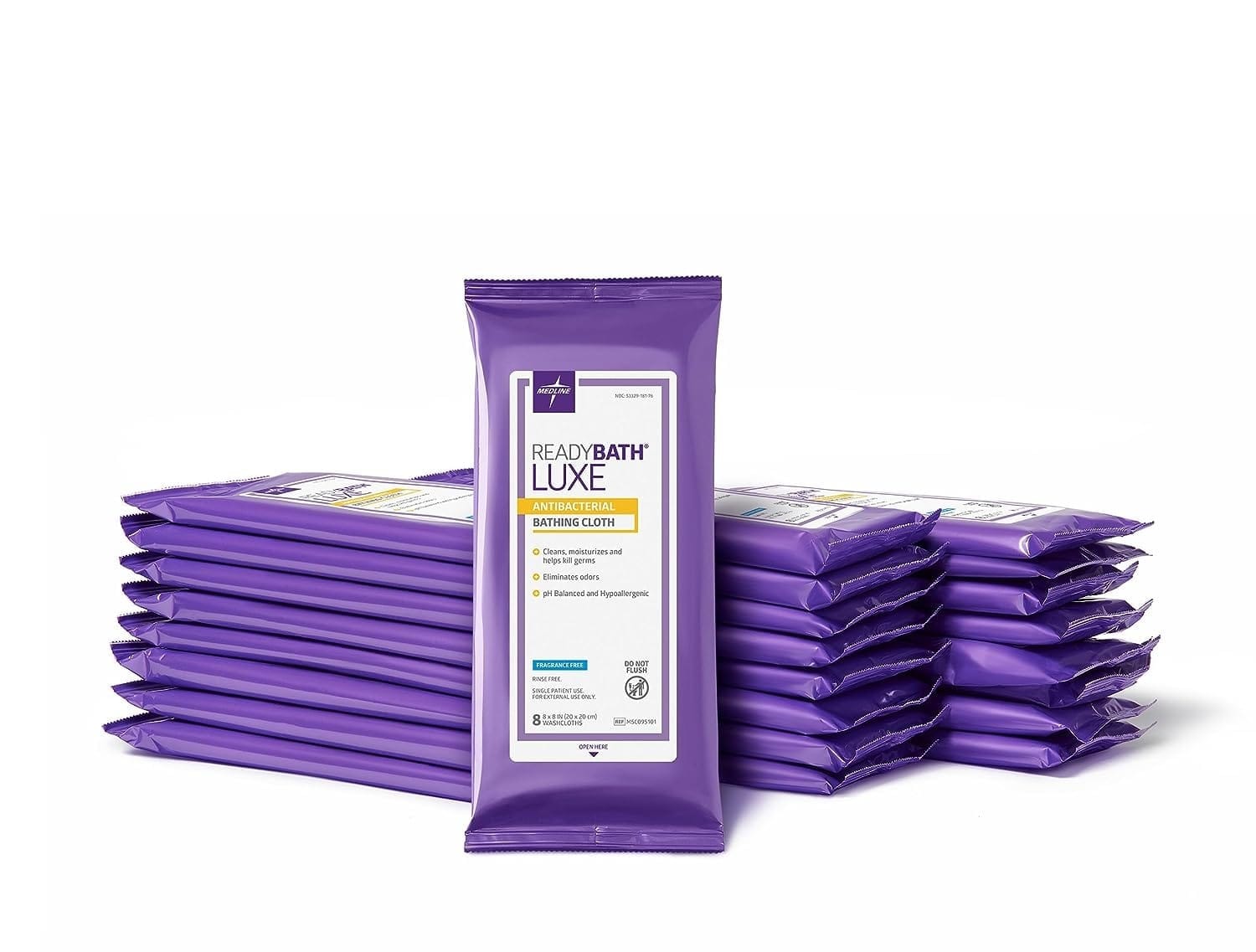
Medline ReadyBath LUXE Antibacterial Body Cleansing Cloths Wipes, Fragrance Free, Extra Thick Wipes (8 Count Pack, 24 Packs)
These handy premoistened shower wipes are specifically designed for adults, boasting a unique no rinse formula that works wonders for your skin. Not only do they cleanse, but they also moisturize and provide a comforting touch. Ideal for post-surgery bathing, incontinence care, bathing wipes for camping and hiking, elderly wipes, or simply to freshen up.
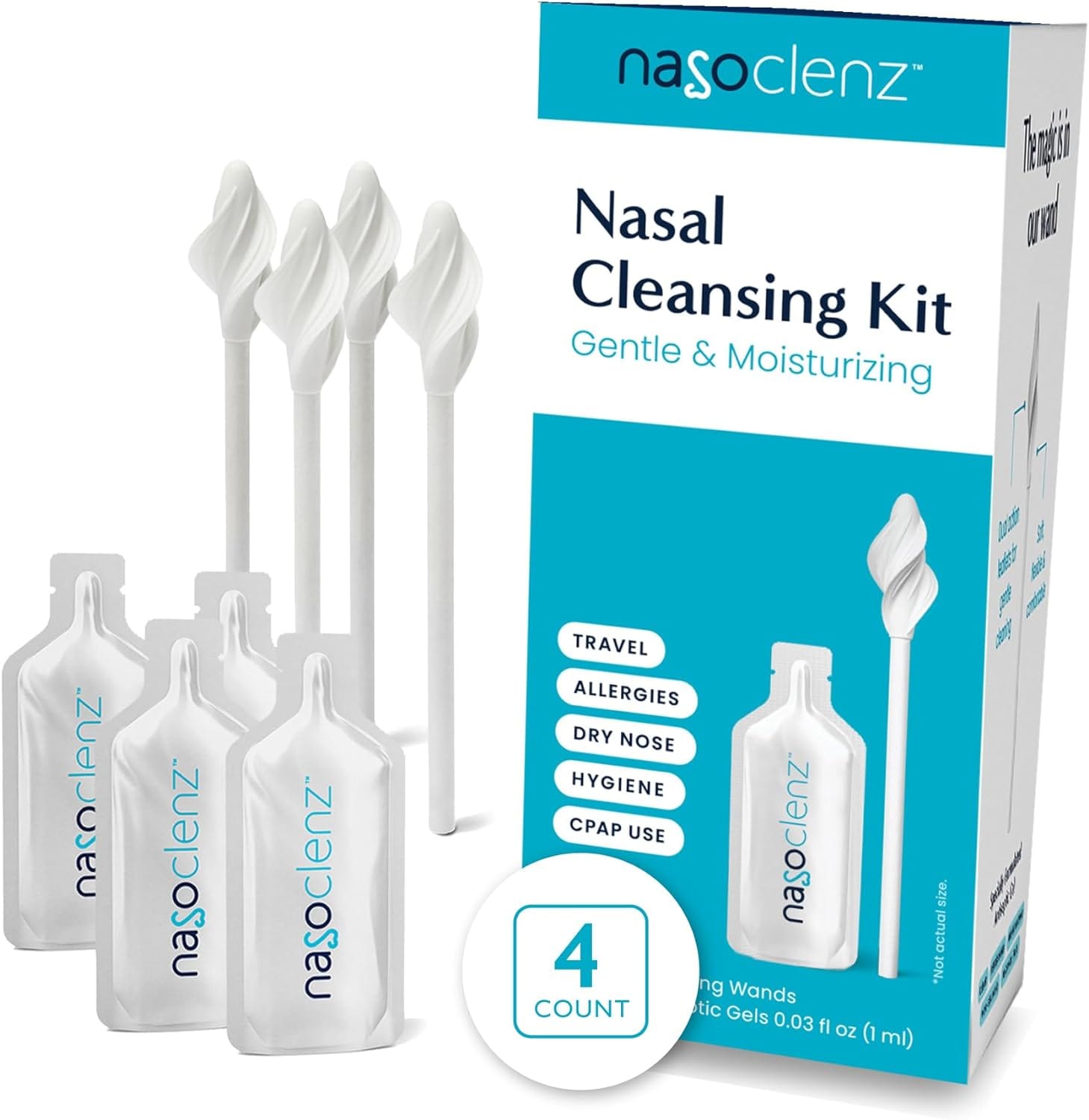
NasoClenz Nasal Cleansing Kit (Regular, 4 Count)
Gentle Wand & Antiseptic Moisturizing Gel, Nose Cleaner and Nasal Moisturizer for Dry Nose Relief for dry nose and allergies, for those looking for sinus support, oxygen users or to keep in your travel hygiene kit.
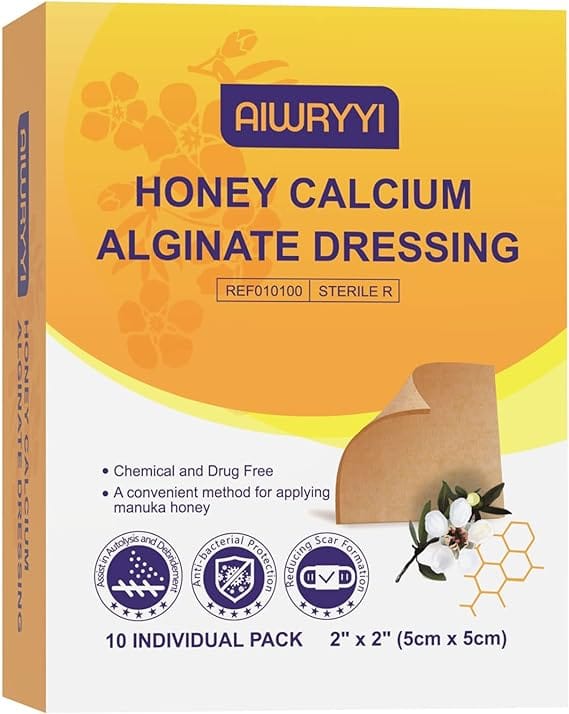
Honey Calcium Alginate Dressing 2”x2”, Pack of 10
Honey Wound Patches with Calcium, Fast Healing Honey Pads for Bed Sores, Surgical Wound, Diabetic Foot Ulcers, Burns and Skin Tears, ensuring a healthy healing process. A remarkable remedy, works wonders on cuts and various skin wounds as a safeguard against wound infections.
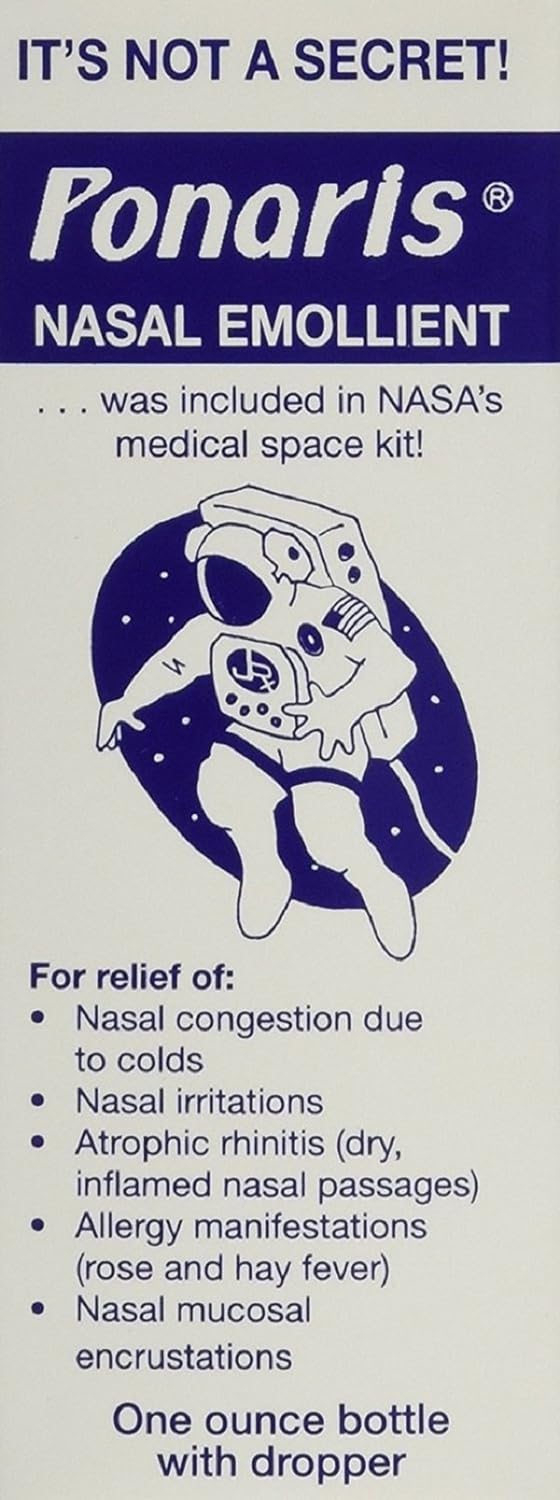
Ponaris Nasal Emollient, 1 Ounce (Pack of 2)
Say goodbye to cold season discomfort with Ponaris, a natural solution to clear your stuffy nose, relieve post-nasal drip, and banish nasal dryness. Experience the power of this remarkable blend, which was once a staple in NASA's medical space kit. Harnessing the goodness of pine, eucalyptus, peppermint, cajeput, and cottonseed oils, Ponaris is your friendly ally in fighting winter woes.
Other prevention measures
In today's medical world, antibiotic resistance has become a growing concern. It is vital for us to take steps to avoid the development of antibiotic resistance with different strains of bacteria.
To address this issue, a scientific panel on antibiotic use has been formed, consisting of experts in the field. They worked tirelessly to provide guidelines and recommendations to healthcare professionals to ensure responsible and effective use of antibiotics.
One specific area where antibiotic use needs careful consideration is in dermatology. The American Acne and Rosacea Society, along with the American Academy of Dermatology Association, has recognized the importance of this issue and has established guidelines on antibiotic therapy for conditions like acne vulgaris and other inflammatory skin disorders.
These guidelines developed by them aim to strike a balance between treating the condition effectively while minimizing the risk of antibiotic resistance.
General sources of antibiotic exposure
Antibiotics can be found in various sources that contribute to antibiotic exposure. It is not just the prescribed antibiotics that we need to be aware of, but also the over-the-counter products that contain antibiotics.
For instance, some skin creams and ointments may contain antibiotics, which can be absorbed into the bloodstream and contribute to the development of antibiotic resistance.
Antibiotics are also commonly used in agriculture, which can lead to the presence of antibiotic residues in food products. By being mindful of these sources of antibiotic exposure and taking necessary precautions, we can help reduce the overall burden of antibiotic resistance.
Consistently wash your hands with soap and water or use an alcohol-based hand sanitizer.
Avoid touching your face, especially the affected areas, to prevent the spread of bacteria.
Cleanse your face twice daily with a gentle cleanser and avoid sharing towels or any personal items.
Replace your pillowcases regularly and avoid using oil-based cosmetics.
If you notice any signs of infection, such as redness or swelling, seek medical attention promptly.
Dirty clothes and bedding can spread MRSA bacteria in active cases. Follow your doctor's or CDCs guidelines to clean contaminated linen.
By adopting these practices, individuals can take a proactive approach towards managing their acne and rosacea without relying solely on antibiotics, thus helping to combat antibiotic resistance in the long run.
FAQs
We answer your questions
What is the connection between acne and MRSA (Methicillin-resistant Staphylococcus aureus)?
MRSA, which is a drug-resistant strain of Staphylococcus aureus ("staph") bacteria, can actually worsen acne symptoms. This is because MRSA can infect the hair follicles and oil glands on the skin, leading to more severe acne breakouts. The use of antibiotics to treat acne over a long period of time can contribute to antibiotic resistance. It is crucial to be cautious when treating acne and to seek medical advice to prevent the potential complications.
How does MRSA infection worsen acne and what are the potential consequences?
MRSA, a type of bacteria, can infect the acne lesions and cause them to become more inflamed and painful. This can result in larger and more persistent acne breakouts. MRSA can spread to other areas of your skin and body, leading to more severe infections and complications. It is important to seek medical attention if you suspect you have an MRSA infection on your acne, as prompt treatment is crucial to prevent further complications.
What are the common symptoms and signs of MRSA-related acne, and how can it be differentiated from regular acne?
If you suspect you have MRSA-related acne, there are some common symptoms and signs to look out for. In this case, you may notice red, swollen, and painful bumps on your skin that resemble regular acne. You might experience fever, chills, and overall feeling unwell. To differentiate it from regular acne, it is essential to consult a healthcare professional who can perform tests to identify MRSA bacteria. Remember, early diagnosis and proper treatment are crucial in managing MRSA-related acne effectively.
What should I do to decrease staph on my body?
Consult your doctor or dermatologist.
According to the CDC, to prevent the spread of MRSA if you have an active infection or if you are a carrier, you have to decrease the amount of staph on your body. However, there are antibiotics that can treat MRSA and make the infection go away. Your doctor may culture your infection and have the lab test the bacteria to find out which antibiotic is best for you.
Your doctor may, for a short period of time:
- Tell you to shower daily with antibacterial soap
- Prescribe antibiotic ointment to put in your nose for several days
- Prescribe antibiotic pills (in some cases). If your doctor gives you antibiotics, take them exactly as prescribed.
Sources
February 28, 2019. CDC. Preventing the Spread of MRSA https://www.cdc.gov/mrsa/healthcare/index.html. Accessed 23/11/23




